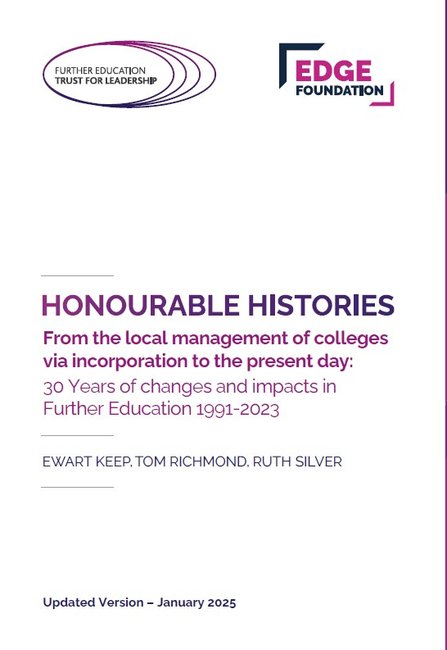Everyone who has worked in or around further education and skills for any length of time will have been frustrated by the shortness of policy memory in the sector, particularly at the level of policymaking.
The churn in political leadership in FE is notorious, and is almost matched by the turnover in the civil service. Further education (including colleges and independent training providers, and encompassing everything from workplace learning and adult and community education to higher-level vocational training and foundation degrees) often serves as a kind of apprenticeship for rising politicians who work briefly with the sector before moving on to other things. Furthermore, most politicians know little of FE when they first encounter it and even those who have some understanding of it have a hard time convincing their privileged, privately educated colleagues in the Treasury of its value and relevance.
With each change at the level of senior policymaking, it seems we have to reinvent the wheel, making our case once again, often defending the sector against either cuts or ill-conceived reforms.
Too often, I have attended meetings with politicians and their senior advisers where the policy solution up for discussion is one that has been attempted before, often more than once, and has been found not to work after a fair try. Such encounters are wearying and dispiriting. However, the fault is not entirely theirs. No one has inducted them in the history of FE because FE is not held in sufficiently high regard to be considered to have a history that matters: it does indeed, and this publication is the beginning of recording it. Often, we have been too busy adapting to the latest policy edict to speak with confidence about who we are and what we do. It is important that we help politicians learn if time is not to be wasted, and we are to be able to build on the lessons of the past in creating our future.
This learning is what this report aims to support. It provides a useful timeline of 30 years of policy in further education, from the local management of colleges through incorporation to the present day, while also looking ahead to the next phase of development and the factors shaping the current policy scene. The chronology tells a story of frequent reform, fluctuating policy interest and changing policy actors and influencers. It reflects not only the shifting perspectives and priorities of policymakers in England, but also a sector almost permanently in search of itself, struggling to define its mission and purpose in a context of near-constant reform and regular political upheaval. This is one of the reasons the Further Education Trust for Leadership (FETL) was set up: to support colleagues within the sector in defining and shaping FE’s sense of identity and direction, rather than waiting for it to be defined on their behalf.
Winston Churchill is reputed to have said that ‘the further back you look, the further forward you can see’. This too speaks to FETL’s aim to interrogate the current context and the factors that shaped it in order to frame our thinking about the future. You have to be able to look back, to recognize and understand what has gone before and how we got to where we are, in order to see ahead clearly. As the authors of this report note, the purpose here is not to relate the history of further education in England, but to provide a short aide memoire of the main trends and landmarks that have created the innovative and dynamic, but in some respects still fragile sector we know today. As with all FETL publications, the aim is to stimulate discussion and frame subsequent debate and reflection. Given the challenges we now face – from the economic fall-out from the pandemic to the fast-changing world of employment – we can no longer afford the luxury of disrespecting history.
Dame Ruth Silver
We update this document annually with the latest changes and publications in FE policy – the current edition is from January 2025.

